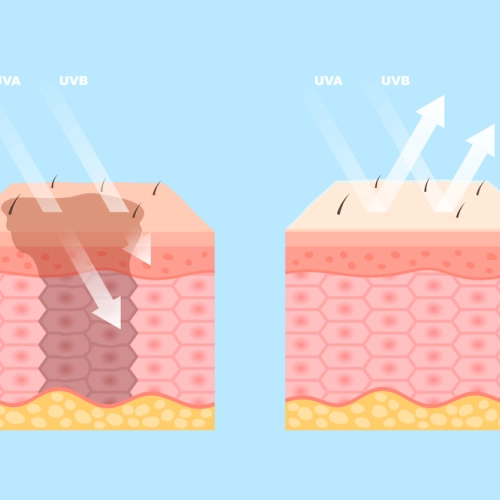
Solar radiation definition: it is the energy emitted by the Sun in interplanetary space.
When we speak about the amount of solar energy reaching the surface of our planet, we use irradiance and irradiation concepts. Solar irradiation is the energy received per unit area (J/m2), the power received in a given time. Likewise, solar irradiance is the power received in an instant - it is expressed in watts per square meter (W/m2)
Nuclear fusion reactions take place in the solar nucleus and are the source of the Sun's energy. Nuclear radiation produces electromagnetic radiation at various frequencies or wavelengths. Electromagnetic radiation propagates in space at the speed of light (299,792 km / s).
A singular value is the solar constant; the solar constant is the amount of radiation received instantly per unit area in the outer part of the earth's atmosphere in a plane perpendicular to the solar rays. On average, the value of the solar constant is 1.366 W / m2.
What is solar radiation?
Solar radiation is the energy that comes from the sun, produced through a process called nuclear fusion. This happens in the sun’s core, where hydrogen atoms are combined to form helium, releasing an enormous amount of energy in the form of light and heat. This energy travels through space as electromagnetic waves and is the main source of energy for life on Earth.
 Solar radiation includes three main types: ultraviolet (UV) radiation, visible light, and infrared (IR) radiation. UV radiation, though a small part of the spectrum, is powerful and responsible for effects like sunburn. Visible light is the portion we can see, and infrared radiation is what we feel as heat.
Solar radiation includes three main types: ultraviolet (UV) radiation, visible light, and infrared (IR) radiation. UV radiation, though a small part of the spectrum, is powerful and responsible for effects like sunburn. Visible light is the portion we can see, and infrared radiation is what we feel as heat.
When solar radiation reaches Earth, about 30% of it is reflected back into space by clouds, the atmosphere, and the surface. The remaining 70% is absorbed by the atmosphere, oceans, and land, driving processes like photosynthesis, the water cycle, and weather patterns.
The amount of solar radiation varies depending on the time of day, the season, and atmospheric conditions like cloud cover. Studying solar radiation helps us better understand how it influences life on Earth, powers renewable energy systems, and affects our climate and environment.
Types of solar radiation
Solar radiation is made up of the following types of radiation:
-
Infrared rays (IR): Infrared radiation provides heat and represents 49% of solar radiation.
-
Visible rays (VI): represent 43% of radiation and provide light.
-
Ultraviolet rays (UV radiation): represent 7%.
-
Other types of rays: represent about 1% of the total.
Types of ultraviolet rays
In turn, ultraviolet (UV) rays are subdivided into three types:
-
Ultraviolet A or UVA: They easily pass through the atmosphere, reaching the entire earth's surface.
-
Ultraviolet B or UVB: Short-wavelength. Has greater difficulty passing through the atmosphere. As a result, they reach the equatorial zone more quickly than at high latitudes.
-
Ultraviolet C or UVC: Short-wavelength. They do not pass through the atmosphere. Instead, the ozone layer absorbs them.
Properties of solar radiation
 The total solar radiation is distributed in a broad spectrum of non-uniform amplitude with the typical shape of a bell, as is typical of the spectrum of a black body with which the solar source is modeled. Therefore, it does not focus on a single frequency.
The total solar radiation is distributed in a broad spectrum of non-uniform amplitude with the typical shape of a bell, as is typical of the spectrum of a black body with which the solar source is modeled. Therefore, it does not focus on a single frequency.
The radiation maximum is centered in the band of radiation or visible light with a peak at 500 nm outside the Earth's atmosphere, which corresponds to the color cyan green.
According to Wien’s law, the photosynthetically active radiation band oscillates between 400 and 700 nm, corresponds to visible radiation, and is equivalent to 41% of the total radiation. Within photosynthetically active radiation, there are subbands with radiation:
-
blue-violet (400-490 nm)
-
green (490-560 nm)
-
yellow (560-590 nm)
-
orange-red (590-700 nm)
When crossing the atmosphere, solar radiation is subjected to reflection, refraction, absorption, and diffusion by the various atmospheric gases to a variable degree as a function of frequency.
Earth's atmosphere acts as a filter. The outer part of the atmosphere absorbs part of the radiation, reflecting the rest directly into outer space. Other elements that act as a filter are carbon dioxide, clouds, and water vapor, which sometimes convert into diffuse radiation.
We have to bear in mind that solar radiation is not the same everywhere. For example, tropical areas receive the most solar radiation because the Sun's rays are nearly perpendicular to the Earth's surface.
Why is solar radiation important?
Solar radiation is essential because it serves as the primary energy source, acting as the driving force behind Earth's environmental systems. It powers crucial biological and physical processes that sustain life.
For instance, solar radiation is directly responsible for photosynthesis, the process by which plants convert sunlight into energy, producing oxygen and serving as the foundation of most food chains.
Additionally, solar energy regulates the planet's temperature, maintaining conditions suitable for life. It also drives natural phenomena like wind and the water cycle, shaping weather patterns and ecosystems.
The amount of solar energy that reaches Earth’s surface is staggering—it is approximately 10,000 times greater than the energy currently consumed by humanity. This vast potential underscores the importance of solar radiation not only for natural processes but also as a renewable energy source to meet our growing energy demands sustainably.
Without solar radiation, life as we know it would not exist, making it an indispensable element of our planet's functioning and a critical resource for the future.
How does solar radiation affect health?
Ultraviolet radiation can have various effects on human skin depending on its intensity and the length of its waves.
 UVA radiation can cause premature skin aging and skin cancer. It can also cause eye and immune system problems.
UVA radiation can cause premature skin aging and skin cancer. It can also cause eye and immune system problems.
UVB radiation causes sunburn, darkening, thickening of the outer layer of the skin, melanoma, and other types of skin cancer. It can also cause eye and immune system problems.
The ozone layer prevents most of the UVC radiation from reaching Earth. In the medical field, UVC radiation can also come from certain lamps or a laser beam and is used to kill germs or help heal wounds. It is also used to treat certain skin conditions such as psoriasis, vitiligo, and nodules on the skin that cause cutaneous T-cell lymphoma.